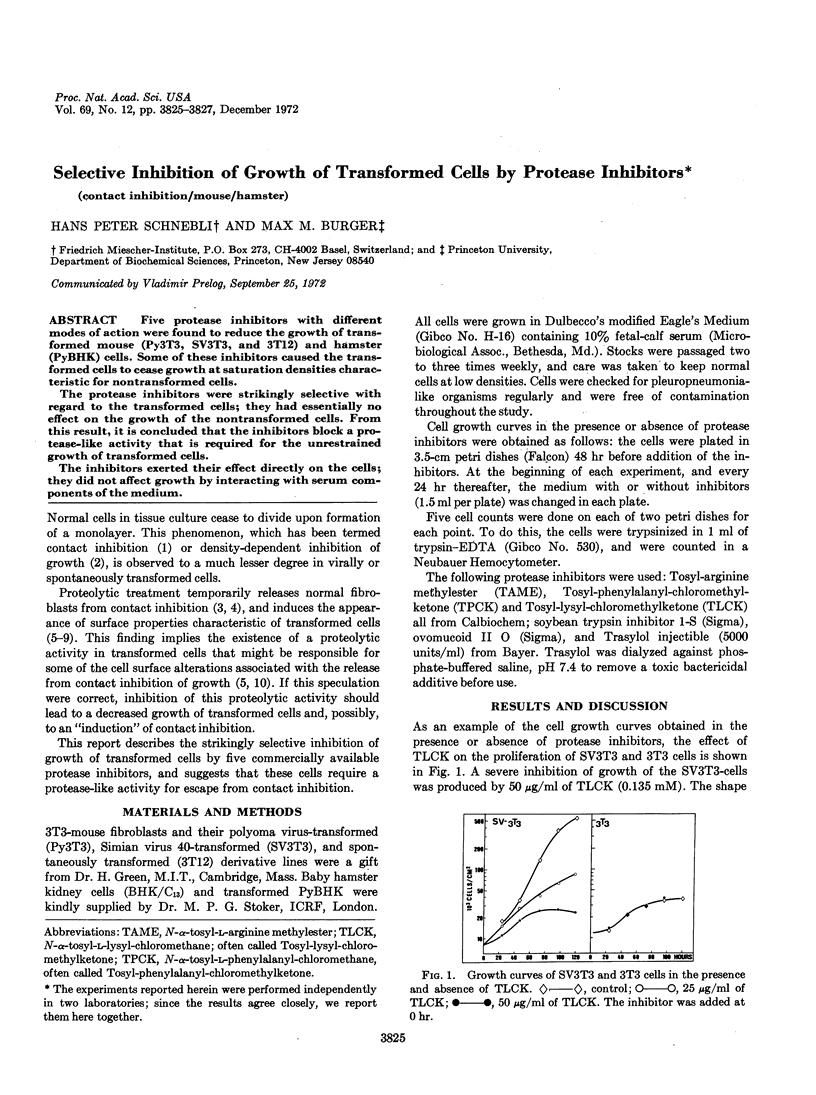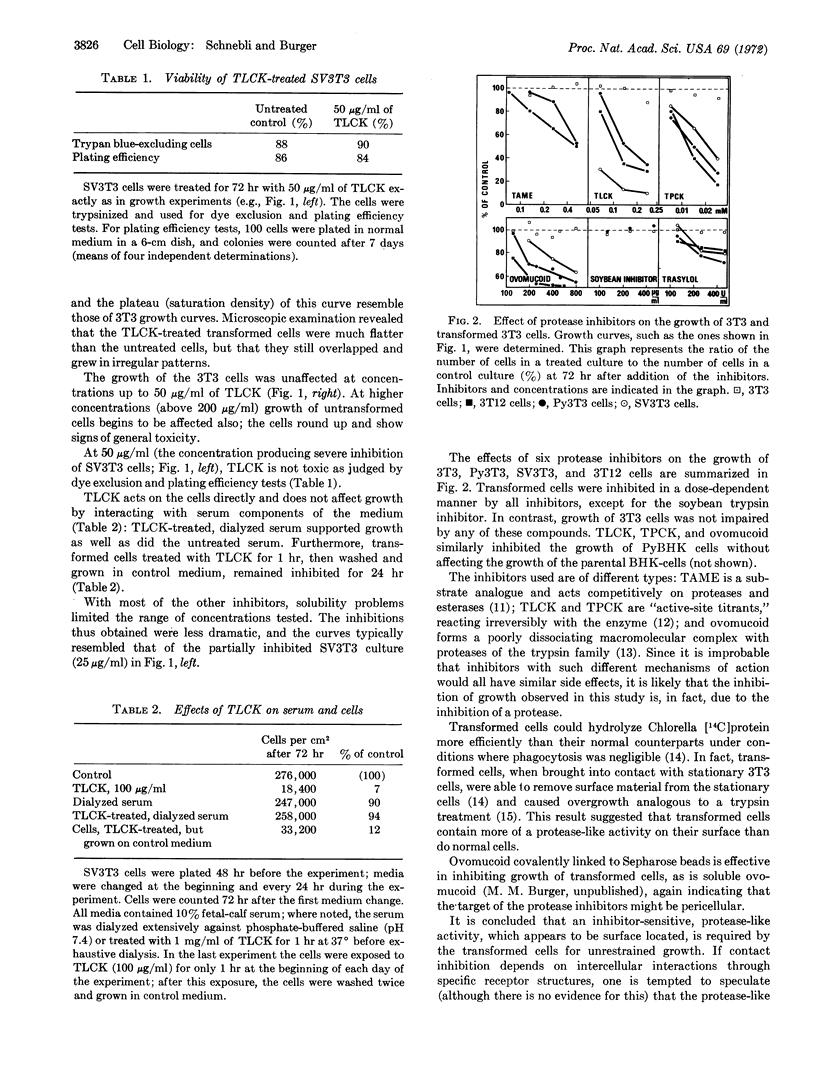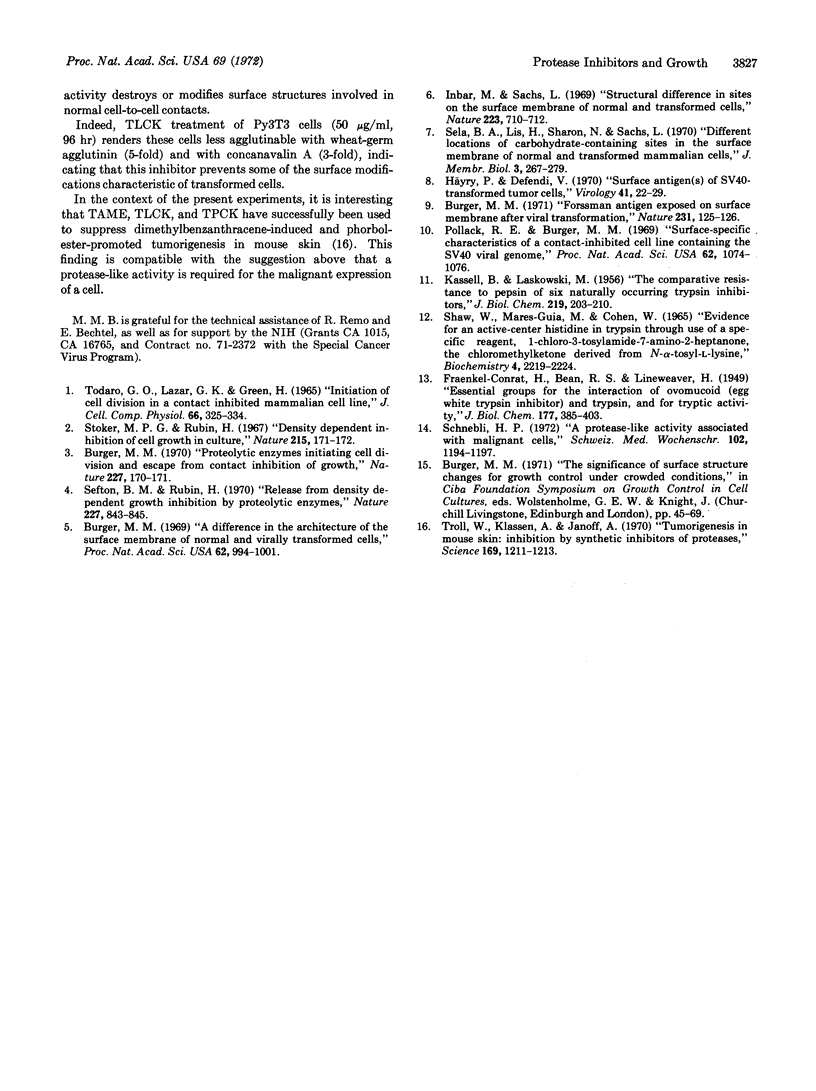Abstract
Five protease inhibitors with different modes of action were found to reduce the growth of transformed mouse (Py3T3, SV3T3, and 3T12) and hamster (PyBHK) cells. Some of these inhibitors caused the transformed cells to cease growth at saturation densities characteristic for nontransformed cells.
The protease inhibitors were strikingly selective with regard to the transformed cells; they had essentially no effect on the growth of the nontransformed cells. From this result, it is concluded that the inhibitors block a protease-like activity that is required for the unrestrained growth of transformed cells.
The inhibitors exerted their effect directly on the cells; they did not affect growth by interacting with serum components of the medium.
Keywords: contact inhibition, mouse, hamster
Full text
PDF


Selected References
These references are in PubMed. This may not be the complete list of references from this article.
- Burger M. M. A difference in the architecture of the surface membrane of normal and virally transformed cells. Proc Natl Acad Sci U S A. 1969 Mar;62(3):994–1001. doi: 10.1073/pnas.62.3.994. [DOI] [PMC free article] [PubMed] [Google Scholar]
- Burger M. M. Forssman antigen exposed on surface membrane after viral transformation. Nat New Biol. 1971 May 26;231(21):125–126. doi: 10.1038/newbio231125a0. [DOI] [PubMed] [Google Scholar]
- Burger M. M. Proteolytic enzymes initiating cell division and escape from contact inhibition of growth. Nature. 1970 Jul 11;227(5254):170–171. doi: 10.1038/227170a0. [DOI] [PubMed] [Google Scholar]
- Häyry P., Defendi V. Surface antigen(s) of SV40-transformed tumor cells. Virology. 1970 May;41(1):22–29. doi: 10.1016/0042-6822(70)90050-4. [DOI] [PubMed] [Google Scholar]
- Inbar M., Sachs L. Structural difference in sites on the surface membrane of normal and transformed cells. Nature. 1969 Aug 16;223(5207):710–712. doi: 10.1038/223710a0. [DOI] [PubMed] [Google Scholar]
- KASSELL B., LASKOWSKI M. The comparative resistance to pepsin of six naturally occurring trypsin inhibitors. J Biol Chem. 1956 Mar;219(1):203–210. [PubMed] [Google Scholar]
- Pollack R. E., Burger M. M. Surface-specific characteristics of a contact-inhibited cell line containing the SV40 viral genome. Proc Natl Acad Sci U S A. 1969 Apr;62(4):1074–1076. doi: 10.1073/pnas.62.4.1074. [DOI] [PMC free article] [PubMed] [Google Scholar]
- Schnebli H. P. A protease-like activity associated with malignant cells. Schweiz Med Wochenschr. 1972 Aug 19;102(33):1194–1197. [PubMed] [Google Scholar]
- Sefton B. M., Rubin H. Release from density dependent growth inhibition by proteolytic enzymes. Nature. 1970 Aug 22;227(5260):843–845. doi: 10.1038/227843a0. [DOI] [PubMed] [Google Scholar]
- Stoker M. G., Rubin H. Density dependent inhibition of cell growth in culture. Nature. 1967 Jul 8;215(5097):171–172. doi: 10.1038/215171a0. [DOI] [PubMed] [Google Scholar]
- Todaro G. J., Lazar G. K., Green H. The initiation of cell division in a contact-inhibited mammalian cell line. J Cell Physiol. 1965 Dec;66(3):325–333. doi: 10.1002/jcp.1030660310. [DOI] [PubMed] [Google Scholar]
- Troll W., Klassen A., Janoff A. Tumorigenesis in mouse skin: inhibition by synthetic inhibitors of proteases. Science. 1970 Sep 18;169(3951):1211–1213. doi: 10.1126/science.169.3951.1211. [DOI] [PubMed] [Google Scholar]


